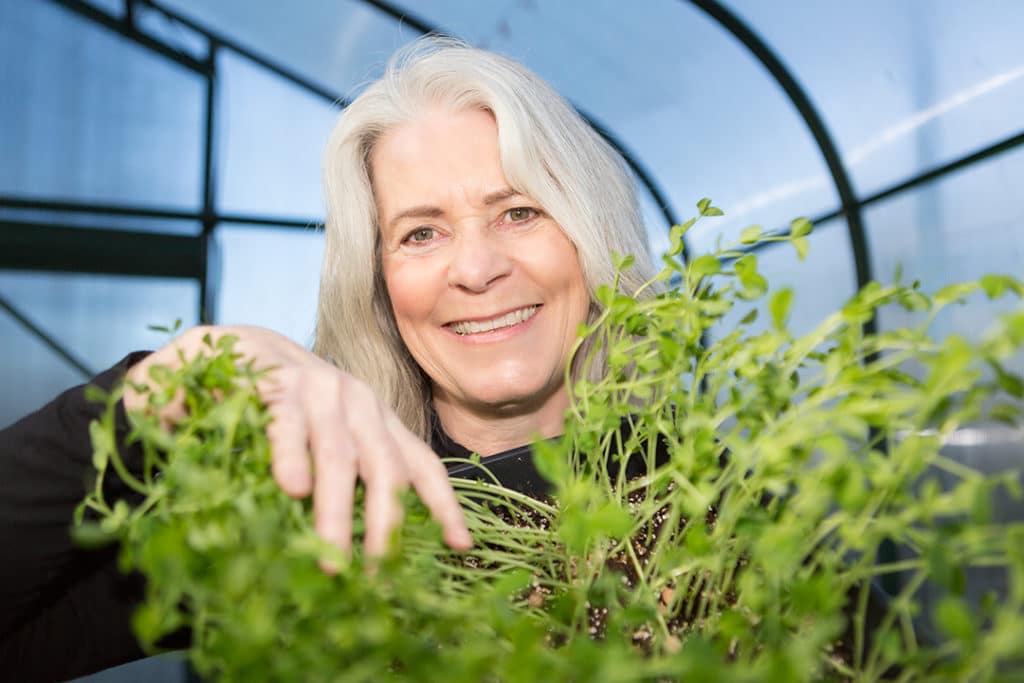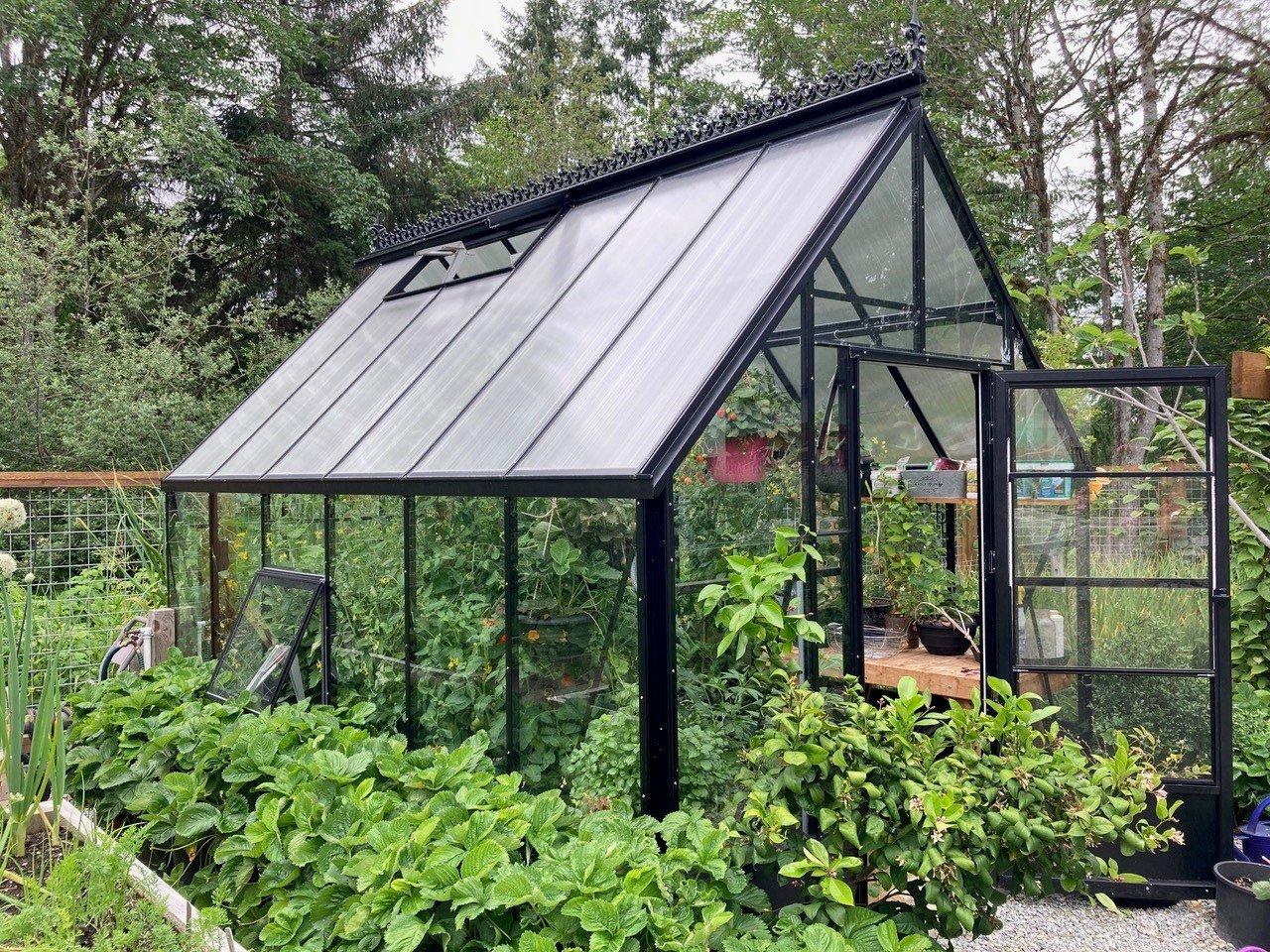BC Greenhouse Builders Welcomes New Brand Ambassador Donna Balzer


BC Greenhouse Builders is thrilled to announce...
We have a new Brand Ambassador Donna Balzer! Donna Balzer is a keen horticulturist, speaker and author with not one but two BC greenhouses in her big backyard! Featured on CBC, HGTV, and Canadian Gardening, Donna will be offering up gardening tips and tricks via a blog post once a month plus some appearances at various gardening shows throughout the year. Thank you for sharing your greenhouse gardening knowledge with us Donna!
Grow Dinner - No Pressure
My greens are an inch short and a day late and it is my fault.
I’m a gardener with a greenhouse so I want to delight guests with homegrown food for the big celebration dinner.
I know, I know, most people just buy everything and combine it like an orchestral performance into mashed this and roasted that. But in our family, the dinner location changes annually and this time this gardener is hosting.
Like everyone else in December I was rushing around working and doing errands when suddenly there was less than a week before C-day and my seeds were still sitting on the counter looking at me. What about us? When do we get to grow?
Summer’s leftover pea seed was out of the packets, mixed together and waiting to magically turn into micro-greens and I was late to the starting gate. Could I turn these mutts into greyhounds? I decided to try.
Day 1 
Seeds want to grow but the limiting factor is often moisture. Big seeds, like peas, need a lot of water and soaking seed, my grandma taught me, speeds the process. But I only have six days. No time to soak seeds overnight. So I soak them all day and I bring potting mix in from my greenhouse to warm it up while the seeds soak. I moisten the warm soil with warm water and placed the soil-filled tray over my heat mat. I want the seeds to swell, sprout and grow in record time.
I place a second flat full of moist soil on top of the seeded flat. The weight of the top flat will keep the seeds below from bubbling up and falling sideways as they sprout.
Day 2
I peek under the top flat and sure enough, I think I see white radicals – or seed roots – emerging. I lower the top flat back in place.
Day 3
More roots emerge. And maybe a few green seed leaves. Very few. I leave the heavy flat of soil on top again overnight but the race is on and we – the seeds and I –are running out of time.
Day 4
Success. Green tips are everywhere when I lift the top flat off so I remove it entirely. I flip on the grow lights, check the moisture level – it is good – and I leave the heat mat on to speed the growth.
Day 5
Seeds are sprinting fast and look like “tiny dinosaur heads,” as four-year-old Nathaniel calls them. He checks on them hourly.
Day 6
It’s the big day. My greens are growing but they are still only 3 inches tall in the morning. I hope they will grow taller by supper. I am not giving up. Guests arrive. We delay them with drinks and appetizers.
Lettuce, spinach, arugula and green onions, picked from my cool greenhouse are washed and waiting. Garden carrots and beets, picked earlier in the fall, are spiralized and added to the green salad. The peas are still growing – I hope.
Nuts are toasted and dressing is prepped. There is no more delaying. I approach the peas and cut the seedlings with scissors. They are still short compared to my usual harvest. The seeds complain: We’ll grow taller if you leave us one more day! I usually plan for eight days to get 6-inch (15 cm) tall pea shoots but dinner is ready and greens are served.
Relief. Everyone is inspired by the “fresh” salad. The pea greens are small but the flavour is big. The diners are delighted. Success.
Now when is the next big occasion? I know it takes at least a month to grow basil micro-greens from seed. Wouldn’t tiny micro-green basil be pretty on heart-shaped tomatoes for Valentine’s Day? I better get growing.
Note to gardeners: Raising salads for winter meals is easier if you plan ahead. I usually start salad-greens in my greenhouse in late summer, and baby beets eight weeks before the first fall frost, so stay tuned and follow along to find out when and how.


